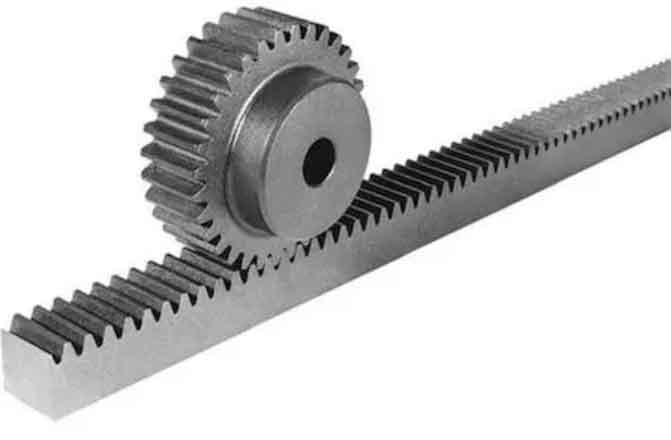
Rack and pinion gears play a critical role in automotive steering systems, enabling precise and responsive control of vehicle direction. They are widely used in both manual and power steering systems, offering several advantages over other steering mechanisms. Here’s a closer look at the role of rack and pinion gears in automotive steering and their contribution to driving innovation:
1. Direct and Responsive Steering:
Rack and pinion gears provide a direct connection between the steering wheel and the wheels, resulting in a more immediate and responsive steering feel. The rotational motion of the steering wheel is directly translated into linear motion along the rack, which in turn moves the tie rods connected to the steering knuckles of the wheels. This direct linkage allows for quick and precise steering response, enhancing vehicle control and maneuverability.
2. Compact Design:
Rack and pinion steering systems have a compact design compared to other steering mechanisms, such as recirculating ball or worm and sector systems. The rack is a linear gear that is mounted horizontally, and the pinion gear is typically located on the steering column. This compact design saves space and allows for easier installation in modern vehicles with limited engine compartments.
3. Improved Steering Feel and Feedback:
Rack and pinion gears provide a more direct and tactile steering feel compared to other systems. The driver can sense the road surface and tire grip more accurately, which enhances the overall driving experience. The immediate response and precise control offered by rack and pinion steering contribute to improved vehicle stability and safety.
4. Power Steering Integration:
Rack and pinion gears can be integrated with power steering systems to reduce steering effort and provide additional assistance to the driver. Power steering systems use hydraulic or electric actuators to assist in the steering effort, making it easier to turn the wheels, especially at low speeds or when parking. This combination of rack and pinion gears with power steering enhances the ease of steering and driver comfort.
5. Enhanced Safety Features:
Rack and pinion steering systems can be integrated with various safety features, such as steering angle sensors, stability control systems, and adaptive steering systems. These features utilize the precise control provided by the rack and pinion gears to enhance vehicle stability, assist in emergency maneuvers, and improve overall safety.
6. Durability and Reliability:
Rack and pinion gears are known for their durability and reliability. They are designed to withstand the forces and stresses involved in steering operations, ensuring long-term performance and minimal maintenance requirements. The simplicity of the design and fewer moving parts contribute to the overall reliability of rack and pinion steering systems.
Rack and pinion gears have revolutionized automotive steering systems, offering direct, precise, and responsive control. Their compact design, integration with power steering, enhanced safety features, and overall durability have driven innovation in the automotive industry. Whether in compact cars, sports cars, or heavy-duty vehicles, rack and pinion gears have become the preferred choice for achieving accurate and reliable steering control, enhancing both performance and safety on the road.
